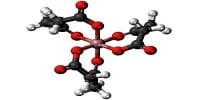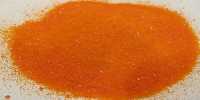All transition elements exhibit variety of oxidation states (or) variable valencies in their compounds. This property is due to the following reasons.
i) These elements have several (n – 1) d and ns electrons.
ii) The energies of (n – 1)d and ns orbitals are fairly close to each other.
Features of oxidation states of transition elements
- The elements which exhibit the maximum number of oxidation states occur either in or near the middle of the series. For example , in the first transition series manganese exhibits maximum number of oxidation states (+2 to +7).
- The elements in the beginning of the series exhibit fewer oxidation states because they have less number of d-electrons which they can lose or contribute for sharing. The elements at the end of the series exhibit fewer oxidation states, because they have too many d electrons and hence fewer vacant d-orbitals can be involved in bonding.
- The transition elements in lower oxidation states (+2 and +3) generally form ionic bonds and in higher oxidation state form covalent bonds.
- The highest oxidation state shown by any transition metal is +8. For example, ruthenium and osmium show highest oxidation states of +8 in some of their compounds.
- Some transition metals show oxidation state of zero in their compounds. Ni(CO)4 and Fe(CO)5 are common examples.














